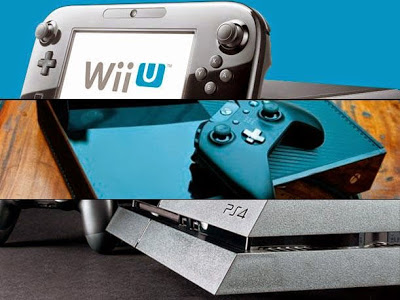

Yet again, the Raspberry Pi foundation has surprised the world. They just announced the Raspberry Pi Zero. But don’t let the name fool you. It’s essentially a cut-down Raspberry Pi, with a price tag to match: each one costs a mere $5. And no, that isn’t a typo.
So, is it any good? What can it do? What compromises were made in order to get it at such a low price point. And more importantly, how can you get one? Read on to find out all these things, and more.
Although there are some pretty significant differences compared to the mainstream Raspberry Pi lineup, it feels deeply familiar.
In terms of cold hard specifications, there’s very little that stands out compared to earlier models. It comes soldered with 512MB of RAM, plus a slightly wheezy 1Ghz ARM CPU and 40 GPIO (General-Purpose Input Output) ports. It can run Scratch and Minecraft, and it supports a broad church of Linux distributions, including Fedora, NOOBS (a beginner-oriented Linux distro), and the Raspberry Pi fan favorite, Raspbian. It’s even made in the same factory as the Raspberry Pi B+ and Raspberry Pi 2 in Bridgend, Wales.

This is very much a Raspberry Pi at its core. But there’s some really major differences that set it apart. I’m not just talking about its diminutive price either, although that in itself is groundbreaking.
Admittedly a little bit obvious, it’s worth stressing how unfathomably tiny the Raspberry Pi Zero is. It measures 30mm (3cm) by 65mm (6.5cm), making it roughly the same size as a box of matches. It’s hard to believe that a fully Linux-capable machine can occupy such a small physical footprint.
Despite that, it’s compatible with most Raspberry Pi-based Internet of Things (IoT) projects. Make Magazine tested it with their pirate radio station project, and it worked with a minimum of changes.
Of course, it goes without saying that a number of compromises were made in order to make the Raspberry Pi Zero so small, and so affordable.
Perhaps the most conspicuous absences are the lack of wired networking and analog audio-out. If you want to get online, you’re going to need to connect a USB Wi-Fi dongle over the built-in MicroUSB connection. Similarly, if you’ve got any hopes of listening to music on your Raspberry Pi Zero, you’ll need to pipe it through the mini-HDMI port. This means your monitor will need to have built-in speakers.
The official Raspberry Pi store sells a bundle that consists of a mini-HDMI and MicroUSB adaptor. This will set you back £4, or about $7. Although you can just as easily get each of these products on Amazon individually for roughly the same price, give or take a few dollars.
But these are minor inconveniences. Especially when you put them next to the decision to use the Broadcom BCM2835 processor.

This is the same processor that shipped with every model before the Raspberry Pi 2, although it’s clocked at 1Ghz, rather than 700Mhz. The Achilles heel of this processor is that it uses the same tired ARMv6 instruction set, which is only supported on a handful of Linux distributions. Ubuntu, unfortunately, is not one of them. It also means that it can’t run Microsoft’s Windows 10 for IoT Core.
I’m calling it: the Raspberry Pi Zero is almost certainly the cheapest Linux computer on the planet. That said, there are similarly low-priced alternatives that are equally worthy of consideration.
Perhaps the most obvious one is the CHIP computer, which bills itself as the world’s first $9 Linux Computer.
The CHIP was a kickstarter phenomenon, raising $2,000,000 over the course of just one month. It shares a lot of similarities with the Raspberry Pi Zero, measuring 40mm (4cm) by 60mm (6cm), and boasts similar specs, packing in a 1Ghz Allwinner CPU, 512MB of RAM, and 4GB of internal storage. Unlike the Pi Zero, it comes with built-in Bluetooth and Wi-Fi, making it a much more attractive proposition for those looking for a day-to-day computer.
If you plan to use the Raspberry Pi Zero to teach coding or in a classroom environment, you owe it to yourself to check out the BBC’s MicroBit.
This diminutive computer distinctly resembles the form factor of the Raspberry Pi Zero. It comes with oodles of GPIO, and support for the Python programming language, although it’s by no means a general purpose computing platform. The only apps it supports are the ones written for it by the user. Each Year 7 pupil in the UK will be given one for free, before they’re eventually available for purchase by the general public. When it’s released, it’ll likely compete with the Raspberry Pi Zero on price, although definitely not on features.
This is to say nothing of the startling number of single-board Linux computers on the market right now – from the PandaBoard, to the Banana Pi, and the ODROID. But none of these are nearly as affordable as the Raspberry Pi Zero. This piece of kit really is in a class of its own.
You shouldn’t have much trouble getting your hands on a Raspberry Pi Zero. In the UK, it’s available to purchase from element14, The Pi Hut, and Pimoroni. If you live in the US, you can get one from Adafruit and the Micro Center.
Better yet, if you live in the UK, you can get a free unit with the December edition of The MagPi, available in stores right now. You heard me right. A free computer with a magazine.
Way back when I used to compile magazine CD-ROMs. Now we get this; a computer on the cover. pic.twitter.com/2K5pK8D7vE
— Simon Le Gros Bisson (@sbisson) November 26, 2015
The Raspberry Pi Zero is a compelling piece of kit, and offers a lot of bang for your (five) bucks. But do you plan to get one? Let me know in the comments below, and we’ll chat.
Photo Credits: Raspberry Pi Zero GPIO Soldering Project (Gareth Halfacre), Raspberry Pi Zero GPIO Soldering Project (Gareth Halfacre)




 11 Must-Have Apps on Ubuntu Right After a Fresh Install
11 Must-Have Apps on Ubuntu Right After a Fresh Install Wolfenstein: The New Order PlayStation Trophy List
Wolfenstein: The New Order PlayStation Trophy List The Witcher 3: Wild Hunt Monster Guide - How to Beat the Royal Griffin
The Witcher 3: Wild Hunt Monster Guide - How to Beat the Royal Griffin What has been the best console of 2014?
What has been the best console of 2014? The Walking Dead: Episode 4 Walkthrough
The Walking Dead: Episode 4 Walkthrough